Posts Tagged: A. I. Root
Nematode Booth Wows Crowd at UC Davis Biodiversity Museum Day
Nematodes! The display of nematodes (aka "roundworms") at the 11th annual UC...
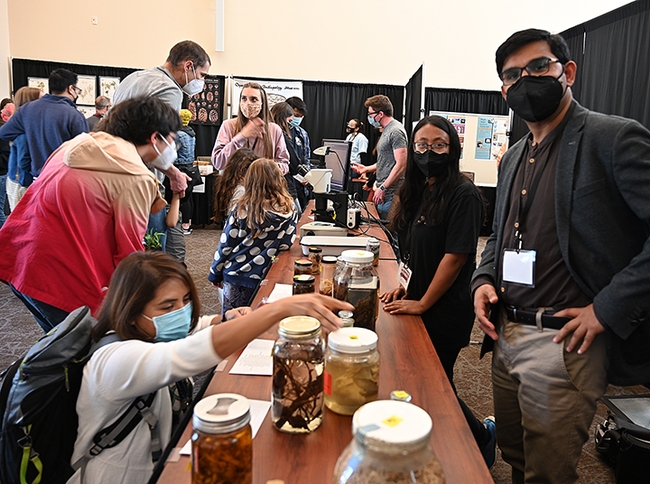
Three nematologists kept busy at their booth at the UC Davis Biodiversity Museum Day. In front is coordinator Shahid Siddique, assistant professor, and his doctoral students Pallavi Shakya (nearest him) and Alison Coomer. In the back (far right) is Rob Blundell, not part of the lab, but who assisted. (Photo by Kathy Keatley Garvey)
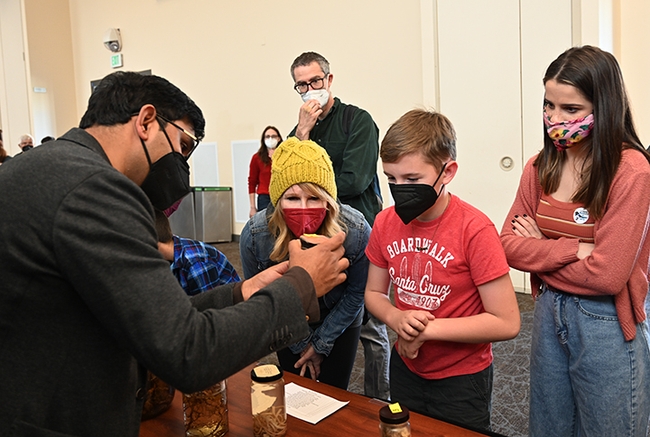
Nematologist Shahid Siddique, assistant professor, UC Davis Department of Entomology and Nematology, shows nematodes to curious visitors. (Photo by Kathy Keatley Garvey)
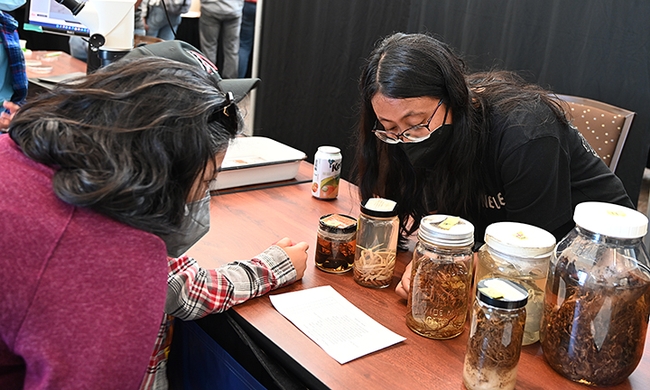
UC Davis doctoral student and nematologist Pallavi Shakya answers questions about nematodes. (Photo by Kathy Keatley Garvey)
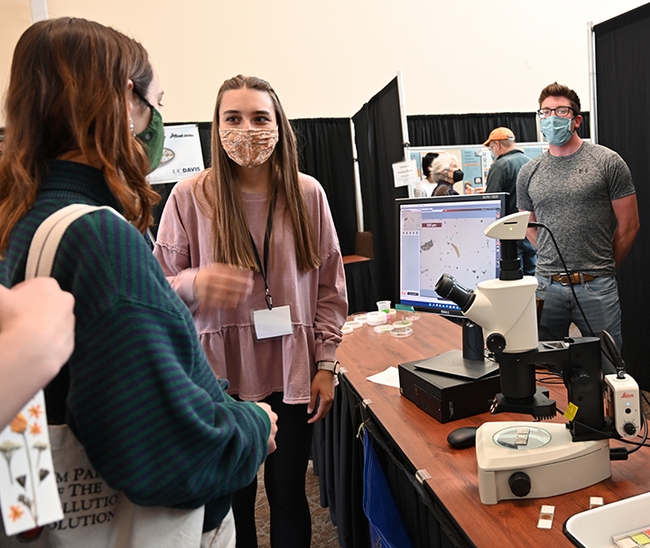
Doctoral student and nematologist Alison Coomer fields questions from the crowd. At far right is scientist Rob Blundell, who assisted. (Photo by Kathy Keatley Garvey)
Of French Fries, Couch Potatoes and Root-Knot Nematodes
When you think of potatoes, your thoughts probably turn to baked potatoes, French fries, the...
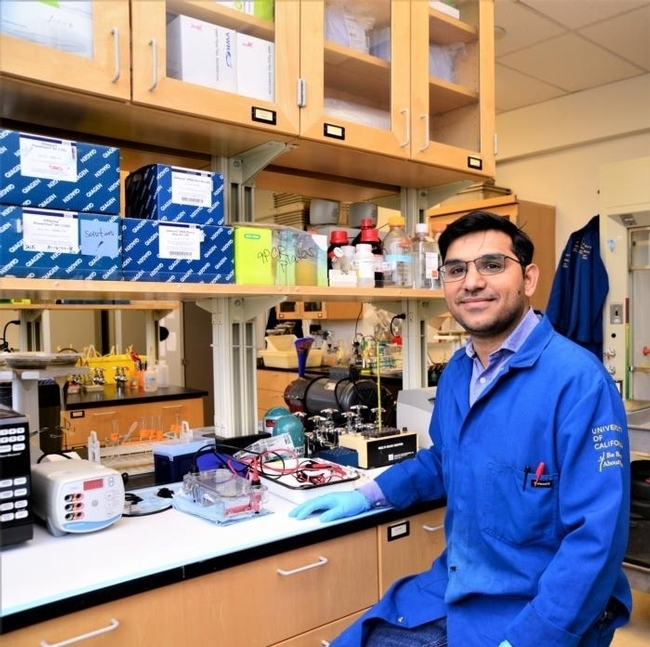
UC Davis nematologist Shahid Siddique. (Photo by Kathy Keatley Garvey)
Hector Facundo, COS SURGE Intern begins summer project at LREC
Hector Facundo, a recent graduate of UC Davis with a major in Statistics, has commenced an...
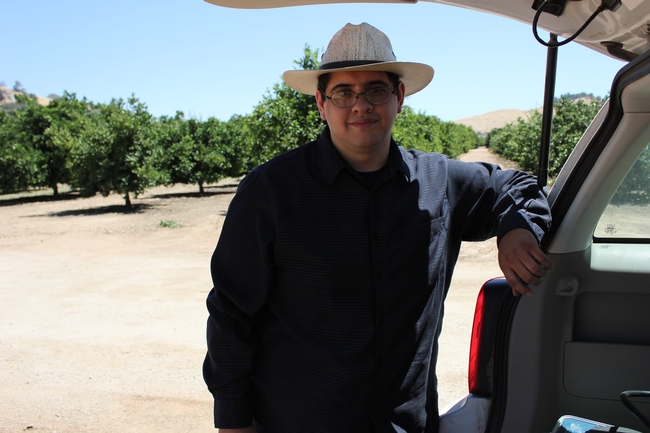
College of the Sequoias SURGE intern Hector Facundo begins project at LREC.
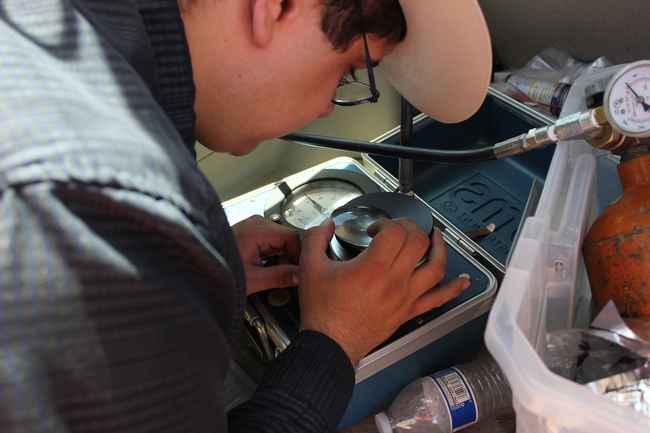
Hector Facundo uses a pressure chamber to collect readings of midday stem water potential in young walnut trees.
To Kill a Honey Bee
How times change with the advancement of knowledge. It's long been known that when honey...
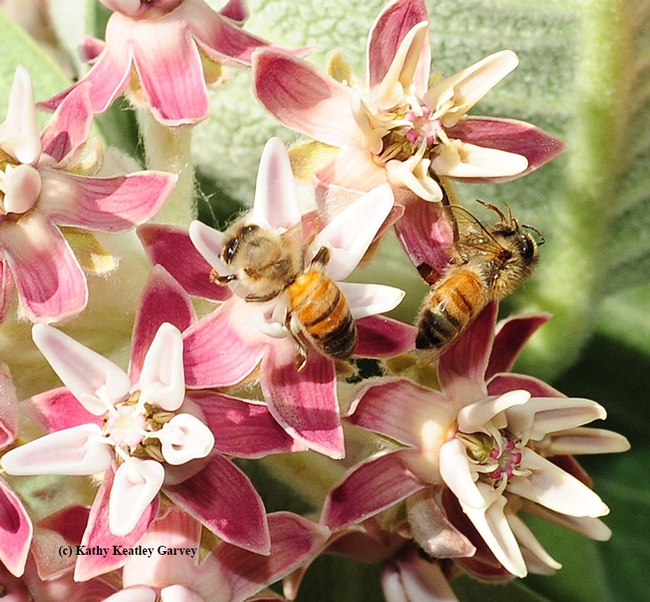
Honey bee (at right) perished when her foot got caught in the pollinia and she was unable to free herself. At left is a foraging bee. (Photo by Kathy Keatley Garvey)
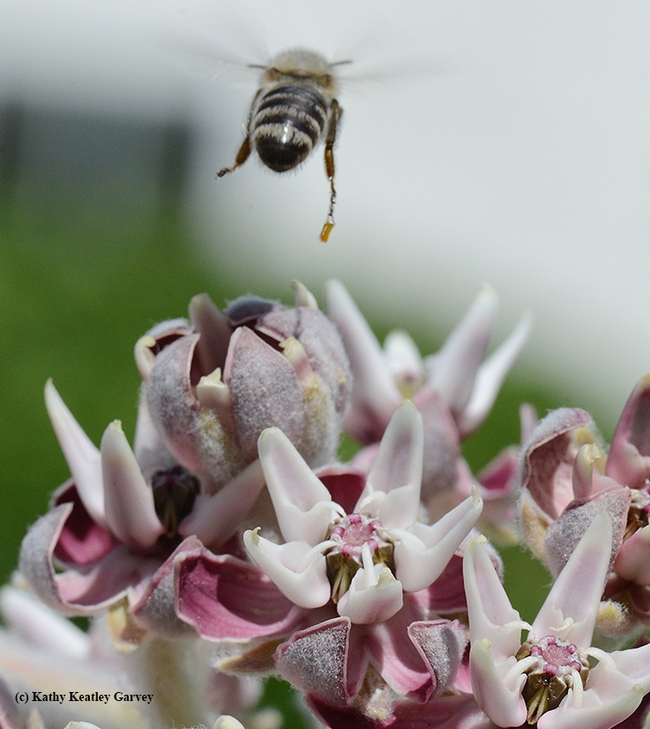
A honey bee flies off with pollinia on her leg. She returned to gather more nectar from the milkweed. (Photo by Kathy Keatley Garvey)
A Carrot field day held at Kearney showcased the results of efforts to develop root-knot nematode resistance in commercial quality carrots.
About 20 carrot industry stakeholders attended a carrot field day on October 7, 2015. The field day showcased the current status of a 20-year program to incorporate root-knot nematode resistance into commercial quality carrots. Philip A Roberts, Chair, nematologist, and professor in the Department of Nematology at UC Riverside, Philipp Simon, Carrot and Garlic Geneticist at USDA-ARS and the Department of Horticulture at University of Wisconsin, Madison lead the project. The research and breeding effort is funded by grants from the California Fresh Carrot Advisory Board and USDA-NIFA.
Numerous carrot advanced breeding lines show good resistance to root-knot infection and will be important in nematode management strategies when resistant varieties are released for growers. The project sites are infested with Meloidogyne javanica and M. incognita, the two common root-knot species in the warm interior valleys of California. To ensure uniform and heavily infested research sites, a 4-year rotation for experimentation (control and advanced selections and crosses of carrots) and uniform cropping (susceptible sorghum, lima beans, and tomatoes) is used.
Kearney is one of several sites used in field screening wild germplasm, new and advanced breeding lines, and finished varieties of carrots. The plots are coded for the source of resistance, and a highly susceptible carrot cultivar planted in every fifth plot is used to indicate the infestation levels. The primary goal is to select for resistance as well as market quality. The crossing of resistant and susceptible carrot lines is followed by agronomic and resistance selection to provide high quality resistant carrot breeding stocks to the seed industry. The seed companies then inter-breed the resistance with their own breeding lines to develop commercial varieties with resistance. The resistance should be highly beneficial for nematode management. Field site data is used with greenhouse data at UC Riverside. The project has also facilitated carrot genome mapping.

Carrot field day attendees evaluating carrot breeding lines at Kearney for root-knot nematode resistance and market traits.